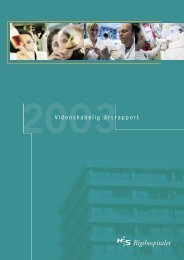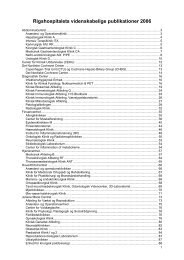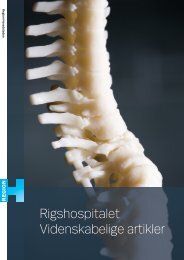View - CTU
View - CTU
View - CTU
Create successful ePaper yourself
Turn your PDF publications into a flip-book with our unique Google optimized e-Paper software.
to impair the endodontic<br />
1ay also take place when<br />
nment. The young dentist<br />
rd the gold standard with<br />
treatment of the necrotic<br />
the young dentist applies<br />
~te<br />
of adoption of new<br />
·ubber dam as part of an<br />
lar, and the endodontic<br />
ration system) are briefly<br />
ndatory in the university<br />
GDPs (82%) never use it<br />
s (Saunders et al. 1999a,<br />
1berg 2002). Based on a<br />
tal students to the use of<br />
predicted that the use of<br />
-his underlies the need to<br />
GDPs to the need to use<br />
the use of rubber dam is<br />
1ulps (Study 11) the risk of<br />
an explanatory factor for<br />
1 (Kirkevang et al. 2001 ).<br />
11as noted that the use or<br />
ents made by the Dental<br />
complaint Boards (Study VI). This could indicate that there are differences between<br />
the Dental Complaint Board policy and that of the official guidelines (European<br />
Society of Endodontology 2006) taught at the universities. It could be speculated that<br />
the low focus on rubber dam application may also be related to the actual level of<br />
knowledge of microbiology among GDPs. Interestingly, -40% of the GDPs regarded<br />
their knowledge as not up to standard concerning microbiology (Study V).<br />
Time spent to instrument a molar<br />
Fifty-six per cent of the responders estimated the time to treat a mandibular molar at<br />
-1 hour(± 15 min.). Compared to other self-reported time evaluations this is rapid. In<br />
a Scottish sample the treatment of a single-rooted tooth was estimated to take about<br />
70 min. (Saunders et al. 1999b). The attitude of working rapidly within endodontics<br />
was recently associated with a low economic incentive (Basmadjian-Charles et al.<br />
2004). The time-cost dilemma in dentistry has also been elaborated by McColl et al.<br />
(1999), where in-depth interviews of GDPs revealed that there was a discrepancy<br />
between the time required for molar endodontic treatment and the fee offered by the<br />
United Kingdom National Health Insurance.<br />
The endodontic treatment procedure<br />
The vast majority of the GDPs (75%) used stainless steel instruments (Study IV),<br />
which today may be considered as an inferior method for instrumenting a tooth<br />
(Molander et al. 2007, Bergmans & Lambrechts 2010). Although the clinical outcome<br />
studies on nickel-titanium instruments are still sparse, the available clinical trials<br />
indicate that the use of rotary systems will lead to a reduced incidence of errors and<br />
possibly to improved clinical outcomes (Peters & Paque 2010). The rate of adoption<br />
was recently reported to be -65% for both nickel-titanium hand instruments and for<br />
nickel-titanium rotary systems among GDPs in the United Kingdom (Madarati et al.<br />
2008). In a Public Dental Service in Sweden a long-term adoption rate was reported<br />
to be as high as 88% when hands-on training was included (Reit et al. 2007),<br />
demonstrating the effect of educational intervention on the adoption of nickel-titanium<br />
instruments. A similar development should be expected in Denmark in the years to<br />
41








